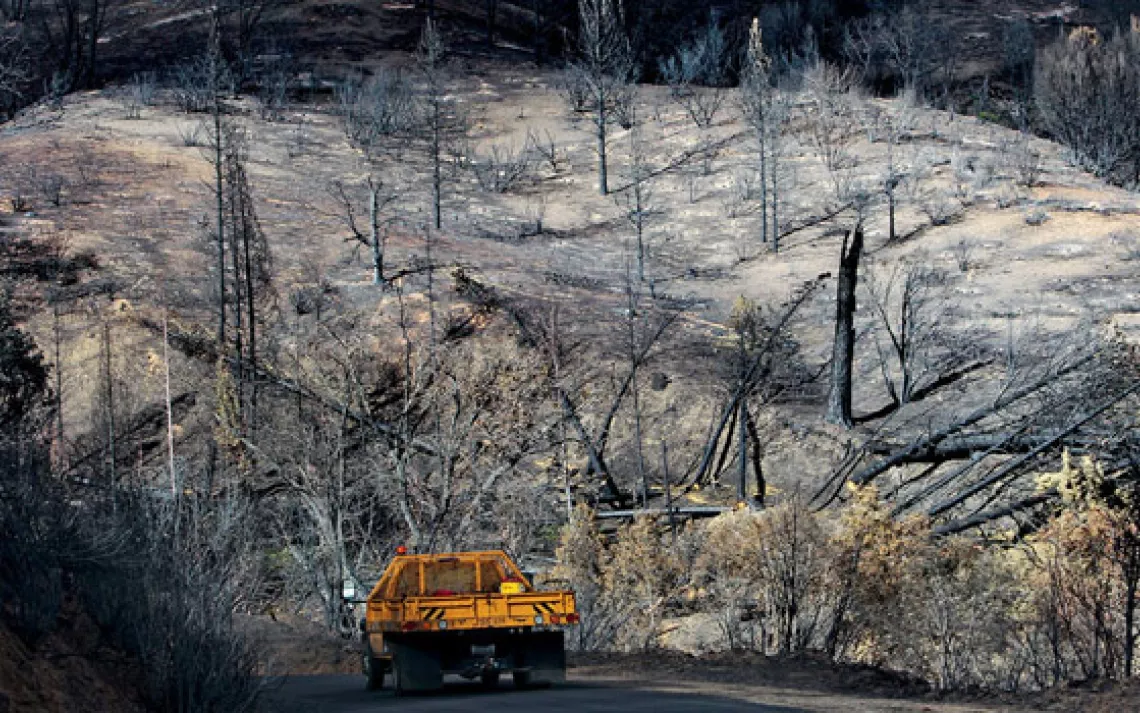Scorched Earth
Extreme wildfires may mean forests without trees

The intensity of last summer's Rim Fire could permanently alter the ecology of Yosemite National Park. | Photo by Michael Macor/San Francisco Chronicle/Polaris
Fire has always been essential to the ecology of western forests. But recent blazes--raging, sprawling infernos such as last year's Rim Fire in California and the 2011 Las Conchas Fire in New Mexico--may not be like those of old. And neither, biologists fear, will be the ecosystems that grow in their wakes.
In the Sierra Nevada, says Malcolm North, a U.S. Forest Service research scientist, low-intensity fires would historically burn intermittently through the understory, allowing mature trees to survive and leaving behind only scattered patches of severely burned forest--usually between a quarter acre and a half acre, rarely larger than 10 acres.
In contrast, the giant Rim Fire had a high-severity burn area of more than 63,000 acres, where trees were left blackened and dead. "They look nuked," North says. The most extreme fires can vaporize foliage and leave little in the way of seeds, nutrients, shade, or moisture to enable the forest to rebuild itself. "Many of these places, particularly the big ones, may not see trees in them for a long time," he says.
This dismal prospect is in part the result of a century of Smokey Bear fire suppression. Forests from Arizona to Alaska grew dense with fuel, leaving them prone to burning at high intensities. Denser forests are also less resilient to warmer temperatures, drought, and disease, all hallmarks of the West's changing climate.
Scientists have long predicted that climate change would lead to more extreme wildfires. The region's annual burn area is already more than six times larger than it was 30 to 40 years ago, and the burn season lasts 10 weeks longer. Today's blazes, instead of being healthy, rejuvenating parts of a natural cycle, can alter forests' very nature through a process known as type conversion. Areas severely burned by the Rim Fire, for example, may see only grasses, shrubs, and a few shade-tolerant but fire-sensitive trees like white fir and incense cedar where ponderosa pines and sequoias once grew.
That same pattern will unfold in different ways in different forests. But it's likely to become more common: "The Rim Fire, rather than the exception, is probably going to become the norm," North says. That could mean a very different future for the grand forests of the West.
 The Magazine of The Sierra Club
The Magazine of The Sierra Club



